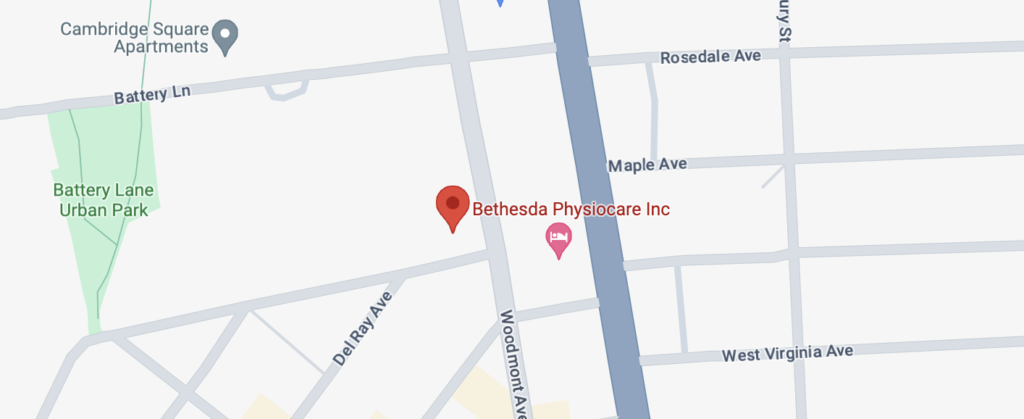
Hypermobility Spectrum Disorder (HSD) is characterized by increased joint mobility and connective tissue laxity. It can be a challenging condition to diagnose, as there is no single definitive test for HSD. Instead, diagnosis typically involves a combination of clinical examination and medical history.
If you are suffering from HSD, our world-class experts are here to help. Contact Bethesda Physiocare online or call (301) 656-5613 to get started today.
The symptoms of HSD can vary widely from person to person and can be mild or severe. The most common symptoms include joint hypermobility, joint pain, muscle weakness, and fatigue. Other symptoms may include digestive issues, skin issues such as easy bruising or hyperextensibility, and anxiety or depression. While patients diagnosed with EDS typically have systemic hypermobility, patients with HSD may only have a few select joints that present as hypermobile. HSD can have a variety of presentations ranging from mild to severe hypermobility. However, It is important to note that a diagnosis of HSD does not mean one’s symptoms are lesser or insignificant as compared to someone diagnosed with EDS. A diagnosis of HSD can often help explain the widespread and reoccurring muscle pain for patients that may have been misdiagnosed with fibromyalgia and other chronic pain conditions. In fact, many patients are unaware they have HSD and are surprised to hear it can be related to many health conditions they may be experiencing.
Physical therapy can be an effective treatment for individuals with HSD and can help to manage symptoms and improve overall function. We will explore some of the key strategies that physical therapists may use to manage patients with HSD.
- Strengthening Exercises: One of the key strategies for managing HSD is to improve joint stability through strengthening exercises. Physical therapists may prescribe exercises that focus on strengthening the muscles surrounding the affected joints, such as the hips, knees, and shoulders. These exercises can help to improve overall strength and stability, which can help to decrease joint pain and prevent future injuries.
- Manual Therapy and Dry Needling: Physical therapists may use manual therapy techniques, such as massage or joint mobilization, to help improve and reduce pain. As with patients with EDS, it is quite common for patients with HSD to have widespread muscle pain and trigger points. This is typically a compensation strategy for having more elastic fascia. In these cases combining dry needling with progressive strengthening can be very effective
- Education: Physical therapists may also provide education on how to manage HSD symptoms. This can include advice on how to modify daily activities to prevent exacerbation of symptoms, as well as information on proper posture and body mechanics. Patients may also be taught how to use assistive devices, such as braces or splints, to support affected joints.
Physical therapy can be a valuable tool in managing symptoms and improving function in patients with HSD. Treatment may include exercises to improve joint stability, joint protection strategies, manual therapy techniques to reduce pain and improve fascial health, education on symptom management, and aerobic exercise to improve overall fitness. By working with a physical therapist, individuals with HSD can improve their quality of life and better manage their symptoms. Contact us online or call (301) 656-5613 for more information.



